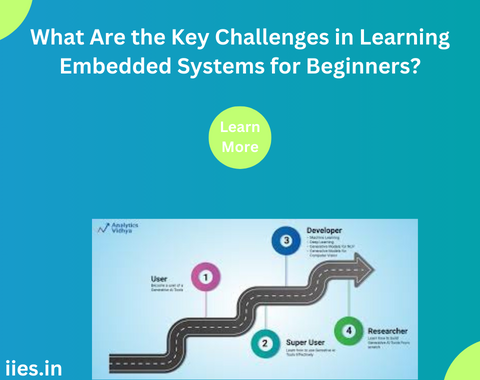
Embedded systems have become an integral part of our daily lives, seamlessly blending into the background to power various electronic devices. From smart thermostats and wearable devices to automotive control systems, these specialized computing systems are omnipresent. The question that often arises is whether working with embedded systems is an easy or challenging endeavor. To answer this, we must delve into the intricacies of embedded systems, exploring both the simplicity and complexity that define this fascinating field.
At its core, an embedded system is a computer system designed for a specific purpose, often dedicated to a particular task or set of tasks. Unlike general-purpose computers, which are capable of running a variety of applications, embedded systems are tailored to perform a predetermined set of functions. This specialization allows them to be efficient, cost-effective, and suitable for applications ranging from industrial automation to consumer electronics.
Ease of Entry:
One of the aspects that make embedded systems accessible is the abundance of development tools and resources available. Numerous microcontroller platforms, such as Arduino and Raspberry Pi, have gained popularity for their user-friendly interfaces and extensive community support. These platforms provide a stepping stone for beginners to grasp the fundamentals of embedded systems without delving into the complexities of hardware design or low-level programming.
The availability of high-level programming languages like Python for certain embedded platforms further simplifies the development process. Developers can leverage their existing coding skills to create embedded applications without the need for in-depth knowledge of assembly language or low-level hardware details.
Additionally, the wealth of online tutorials, forums, and documentation facilitates the learning process for newcomers. Aspiring embedded systems enthusiasts can find a plethora of resources that guide them through basic projects, helping them gain hands-on experience and confidence in their abilities.
Challenges in Embedded Systems Development:
While entry-level projects and platforms provide a gentle introduction to embedded systems, the landscape becomes more challenging as projects scale in complexity. Developing robust and efficient embedded systems requires a deep understanding of hardware constraints, real-time operating systems (RTOS), and low-level programming languages like C and assembly.
Hardware intricacies, such as managing memory constraints, optimizing power consumption, and dealing with various communication protocols, demand a higher level of expertise. This is especially true for applications like medical devices, automotive systems, and industrial automation, where reliability and precision are critical.
Real-time constraints in embedded systems further contribute to the complexity. Many embedded applications require timely responses to inputs, making the development of responsive and deterministic systems a challenging task. Dealing with interrupts, scheduling tasks, and ensuring the system meets stringent timing requirements can be daunting for developers who are new to the intricacies of real-time embedded programming.
Furthermore, debugging embedded systems poses its own set of challenges. Unlike desktop applications where debugging tools are abundant, embedded systems often require specialized tools and techniques. Debugging on the hardware level may involve the use of oscilloscopes, logic analyzers, and in-circuit emulators, adding an extra layer of complexity to the development process.
Professional Expertise and Specialization:
As projects become more sophisticated, the demand for professionals with specialized knowledge in embedded systems grows. Industries such as aerospace, medical, and automotive rely on embedded systems experts to design and implement reliable and efficient solutions. This specialization often involves a deep understanding of specific hardware architectures, communication protocols, and industry standards.
The integration of safety and security considerations further elevates the complexity of embedded systems development. In safety-critical applications like autonomous vehicles or medical devices, failure can have severe consequences. Thus, developers must navigate through additional layers of complexity, incorporating redundancy, fault tolerance, and security measures to ensure the system’s reliability and integrity.
Advanced Concepts and Emerging Technologies:
As the world of technology continues to evolve, so do the challenges and opportunities within embedded systems development. Emerging technologies like the Internet of Things (IoT), artificial intelligence (AI), and edge computing bring forth a new wave of possibilities, but they also introduce complexities that demand a higher level of expertise.
In the realm of IoT, for instance, embedded systems must seamlessly interact with a myriad of interconnected devices. This demands a deep understanding of communication protocols, network architectures, and security considerations. Furthermore, the integration of AI into embedded systems requires not only knowledge of machine learning algorithms but also an understanding of how to implement them efficiently within resource-constrained environments.
Edge computing, where processing is performed closer to the data source rather than relying on a centralized cloud, is another paradigm shift that demands a nuanced approach. Developers must grapple with optimizing algorithms for limited computational resources while ensuring low-latency responses—considerations that elevate the difficulty level of embedded systems development.
Hardware Design and Customization:
While entry-level projects often utilize off-the-shelf development boards, real-world applications often demand custom hardware design. Developing embedded systems from scratch requires expertise in circuit design,
Custom hardware design introduces a new dimension of complexity, as developers must address issues like electromagnetic interference, signal integrity, and power distribution. Moreover, considerations such as minimizing power consumption become paramount, especially in applications where energy efficiency is crucial, such as in battery-powered devices or those deployed in remote locations.
In the realm of embedded systems, the ease or difficulty of development is subjective and depends on various factors. For beginners, the plethora of entry-level platforms and resources makes it relatively easy to dip their toes into embedded programming. However, as projects advance in complexity and move towards real-world applications, the challenges escalate, demanding a deeper understanding of hardware, software, and real-time constraints.
Ultimately, the path in embedded systems development involves a learning curve. While the initial steps may seem approachable and encouraging, the journey becomes more nuanced as developers tackle intricate projects. The blend of ease and complexity in embedded systems reflects the diverse landscape that accommodates both newcomers and seasoned professionals, each finding their niche in this ever-evolving field.
Indian Institute of Embedded Systems – IIES